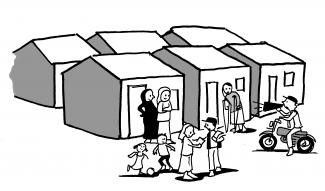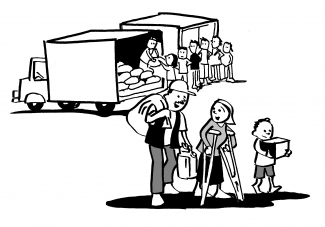Submitted by ceteo
on Mon, 12/16/2019 - 13:27
An inclusive and accessible emergency relief distribution:
- Is planned together with representative organisations or individuals of different at-risk groups in the community.
- Is based on disaggregated population data and inclusive needs assessments.
- Targets the most-affected, most-at-risk households in the affected communities.
- Is announced to everyone in the community, using multiple, accessible channels, such as mobile phone service, megaphone/loudspeaker announcement, radio, Braille print, community meetings, and via community-based organisations.
- Is implemented at accessible, safe and reachable distribution points. Access to the site should be flat and cleared of obstacles and well-signed.
- Provides urgent live-saving items needed by persons from different at-risk groups (including medicine, food for persons with specific dietary needs, extra blankets for older persons, persons with disabilities and bed-ridden persons etc.). Consult with people from at-risk group beforehand to stockpile emergency relief supplies.
- Includes transportation from distribution points to people’s homes, for those with mobility limitations or other difficulties carrying the items over longer distances.
- Provides chairs, shade and priority lanes for older persons, persons with disabilities, pregnant women and others who have difficulties waiting in line for longer times.
- Provides accessible latrines and water for people who wait.
- Depending on the site, a guiding string or rope could connect the site and the latrines for orientation for blind persons and persons with visual impairments.
- All drills and exercises should include women, persons with disabilities, children, older persons and other people with diverse backgrounds in planning and implementation.

©Julie Smith

©Julie Smith

©Julie Smith
Sources